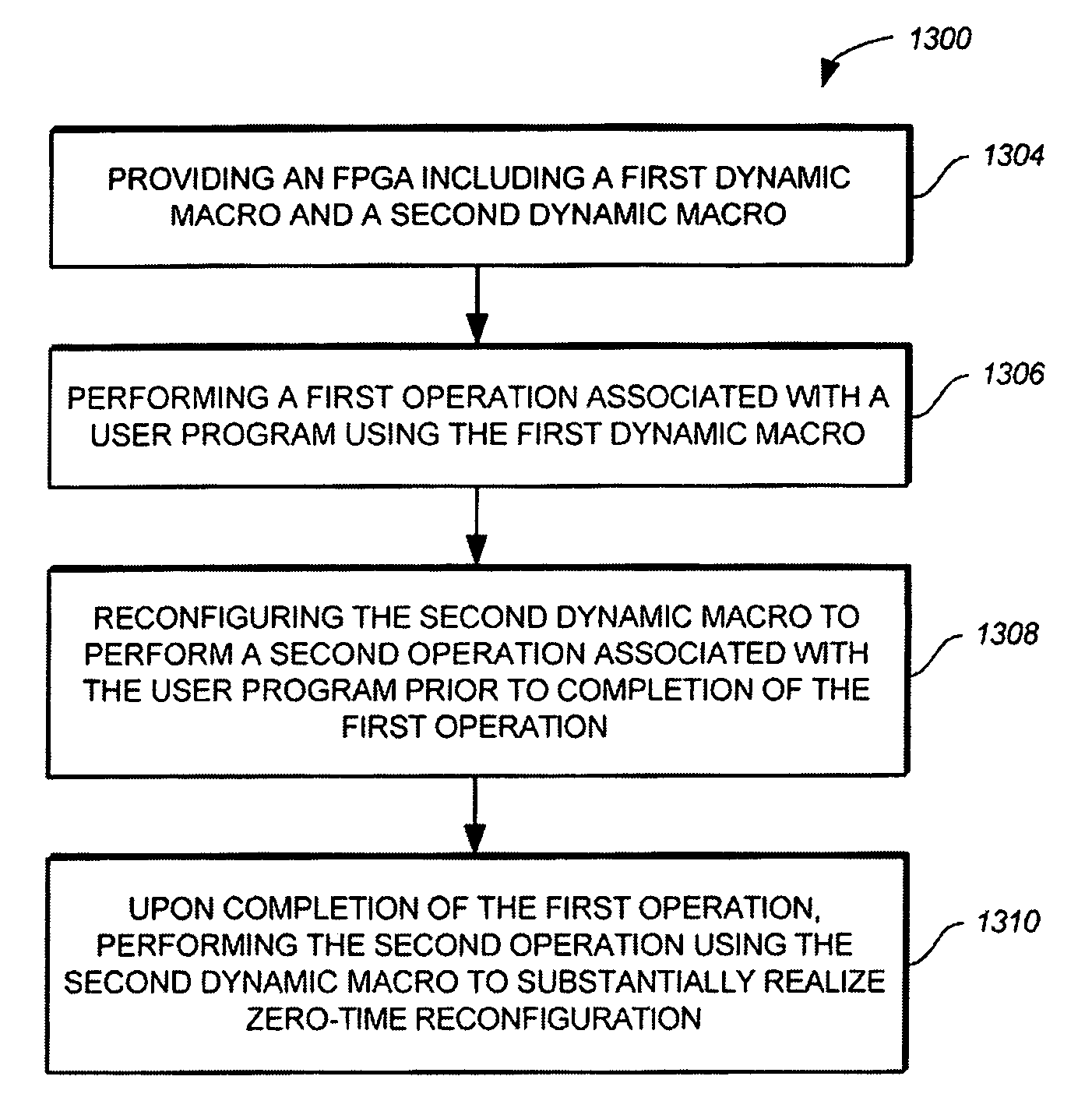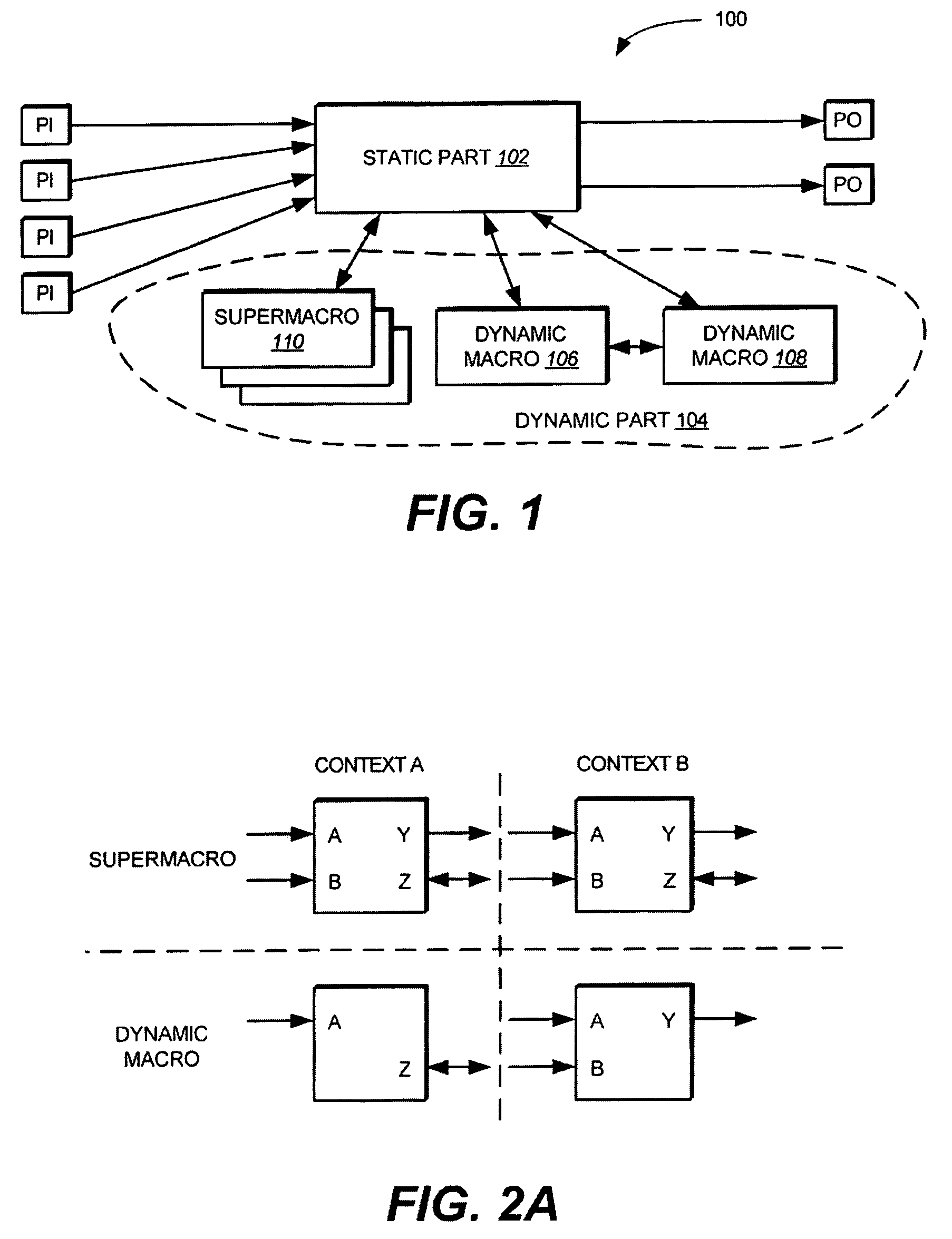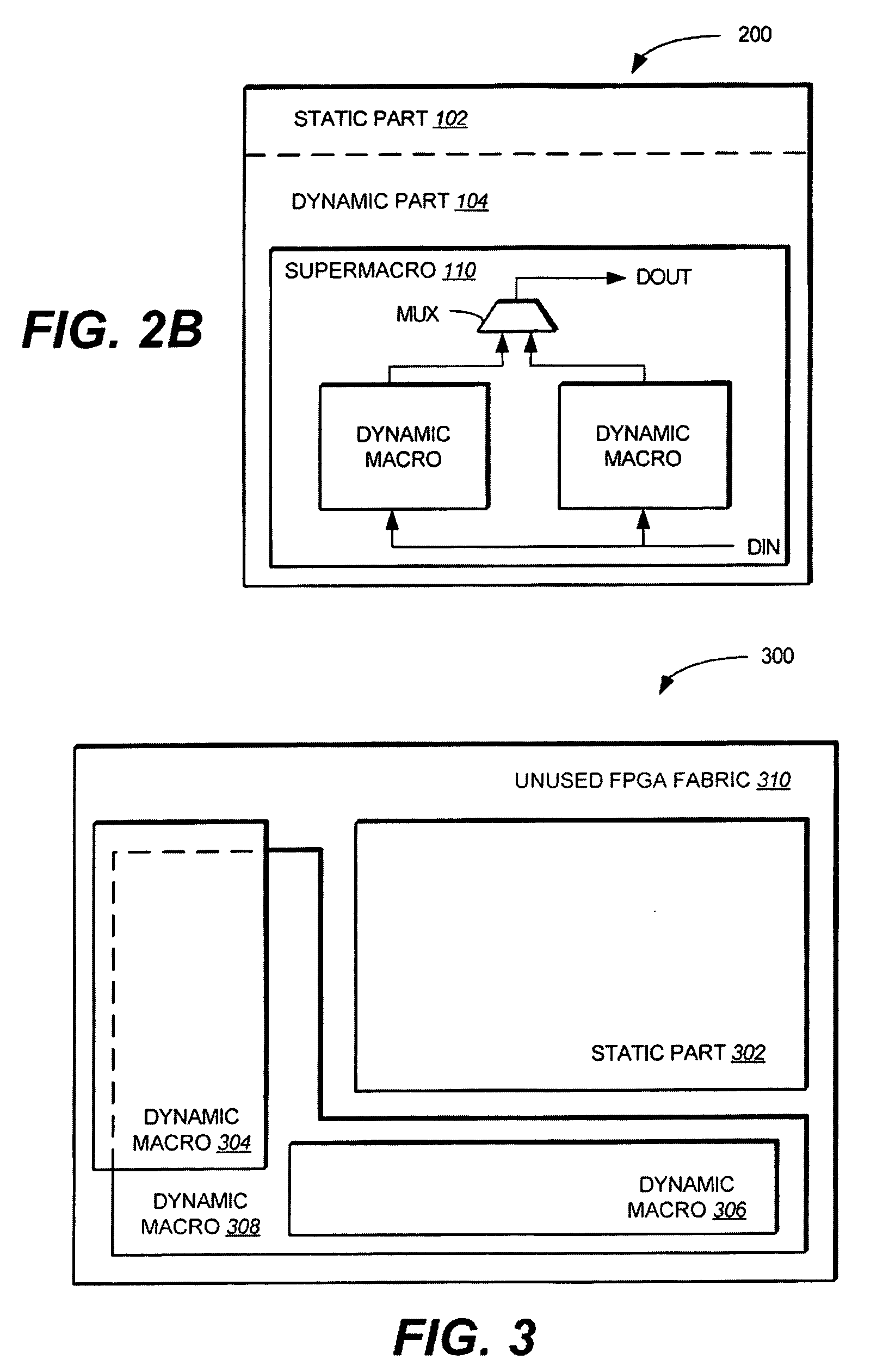Method and system for dynamic reconfiguration of field programmable gate arrays
a field programmable gate array and dynamic reconfiguration technology, applied in pulse techniques, instruments, computation using denominational number representation, etc., can solve the problems of affecting the processing time of user programs, implementing anti-fuse technology, and either factory-programming fpga or implementing anti-fuse technology, so as to reduce the complexity of placemen
- Summary
- Abstract
- Description
- Claims
- Application Information
AI Technical Summary
Benefits of technology
Problems solved by technology
Method used
Image
Examples
Embodiment Construction
[0028]The present invention relates generally to digital circuits, and more particularly to dynamic reconfiguration of field programmable gate arrays (FPGAs). The following description is presented to enable one of ordinary skill in the art to make and use the invention and is provided in the context of a patent application and its requirements. Various modifications to the preferred implementations and the generic principles and features described herein will be readily apparent to those skilled in the art. Thus, the present invention is not intended to be limited to the implementations shown but is to be accorded the widest scope consistent with the principles and features described herein.
[0029]FIG. 1 illustrates a block diagram of an FPGA 100 according to one implementation of the invention. FPGA 100 includes a static part 102 and a dynamic part 104. In one implementation, static part 102 corresponds to logic within FPGA 100 that must always be present and running within FPGA 10...
PUM
 Login to View More
Login to View More Abstract
Description
Claims
Application Information
 Login to View More
Login to View More - R&D
- Intellectual Property
- Life Sciences
- Materials
- Tech Scout
- Unparalleled Data Quality
- Higher Quality Content
- 60% Fewer Hallucinations
Browse by: Latest US Patents, China's latest patents, Technical Efficacy Thesaurus, Application Domain, Technology Topic, Popular Technical Reports.
© 2025 PatSnap. All rights reserved.Legal|Privacy policy|Modern Slavery Act Transparency Statement|Sitemap|About US| Contact US: help@patsnap.com



